
table of contents
- Scale insects
- prevention
- Home remedies
- Predators
- soap
- nicotine
- Bracken
- Tea tree oil
- Nasturtiums
- Oils
Scale insects, like mealybugs and aphids, are among the most stubborn and unpleasant pests that particularly affect indoor plants. Orchids, an aromatic one lemon Tree or rubber trees are found food for the lice due to incorrect care and measures should be taken here as soon as possible to protect the plants from infestation. The speed with which the scale insects multiply is particularly frightening. Only selected home remedies can help.
Scale insects
What are scale insects?
Scale insects are a family of the order plant lice and can be found worldwide with up to 3,000 species. Coccoidea, the Latin name, is represented with around 90 species in Central Europe and of these, for example, mealybugs or mealybugs are often found in the homes of Germans. The females of the lice feed on the plant sap and use the energy obtained from it to lay eggs, while the males only serve for reproduction.
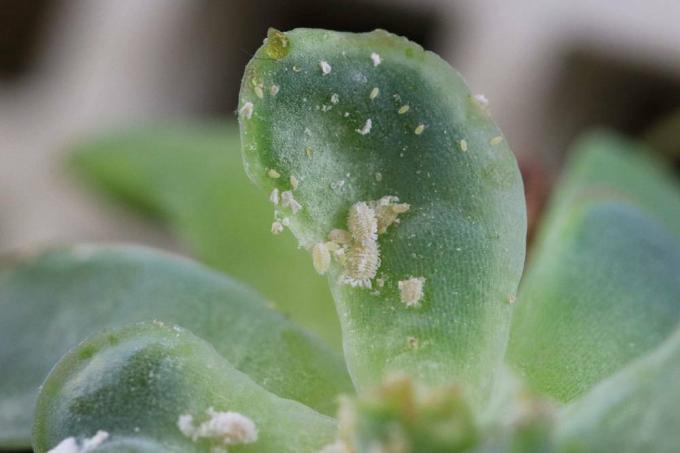
You can recognize scale insects by the following characteristics:
- live in colonies
- mostly hidden on the underside of leaves, branches or shoots
- form protective covers (for example made of wax), act like small armor or shields
- Honeydew arises as an excretion on the plant
- Ants are attracted by honeydew
As soon as the plant lice have made themselves comfortable on the plants, they begin to feed on the juices and produce the eggs under their shell. This creates offspring that behave in the same way and so the plant suffers more and more from the infestation.
The following indoor plants are often attacked:
- Moth orchids (Phalaenopsis)
- Oleander (Nerium oleander)
- Figs, including gum trees (Ficus)
- Lemon tree (citrus)
- Ivy (Hedera helix)
- Flamingo flowers (Anthurium)
- Ornamental asparagus (Asparagus densiflorus)
- Window leaves (Monstera)
If one of your houseplants has been attacked by scale insects, this is reflected in the following symptoms.
- white coating on the shoots and leaves
- Leaves and flowers look unhealthy
- Encrusts the shoots
- The leaves are discolored
- unexpected leaf loss
Depending on the intensity of the symptoms, either prevention or one of the means is necessary to put an end to the scale insects.
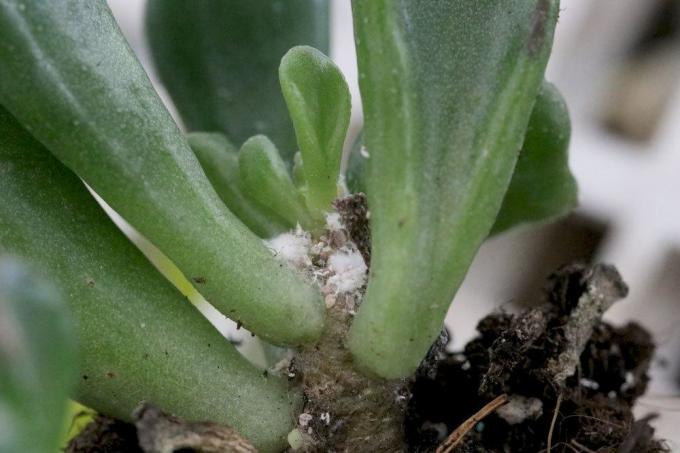
prevention
Prevent infestation
The use of home remedies does not have to take place if you do not neglect the appropriate care, since scale insects mainly infest already weakened plants. Indoor plants are most often attacked in winter quarters when the room is too dry or warm due to the heating air. The following mistakes should be avoided in general maintenance.
- low humidity (dryness)
- Waterlogging / lack of water
- Over-fertilization / under-fertilization
- not enough or too much light
If you follow the appropriate care instructions for your houseplants, the risk of lice infestation is extremely low. However, if you spot the first specimens on your orchids and the colony is still in the development stage, you can scrape off the existing insects with a sharp knife. Use a sharp edge for this and carefully guide it under each individual animal. Do not cut into the shell, this would have no effect and could free potential eggs or young animals. You can also injure shoots or leaves if you cut into the shield and do not lift the louse off the plant.
Note: The above-mentioned methods are mainly used to maintain the health of the plant, because scale insects are primarily interested in plants that are already weakened.
Home remedies
With 12 home remedies to success
Scale insects are stubborn pests, but there are a variety of home remedies that, after regular and thorough use, prove to be effective against the pests. But before applying the funds, do the following to get rid of the lice on the plants.
- isolate affected plants
- provide fresh air near the plant
- large amounts of direct sunlight, even on plants that are not used to it
- spray the crop every day with water appropriate for the plant
- create temperature fluctuations so that the scale insects cannot get used to the room temperature
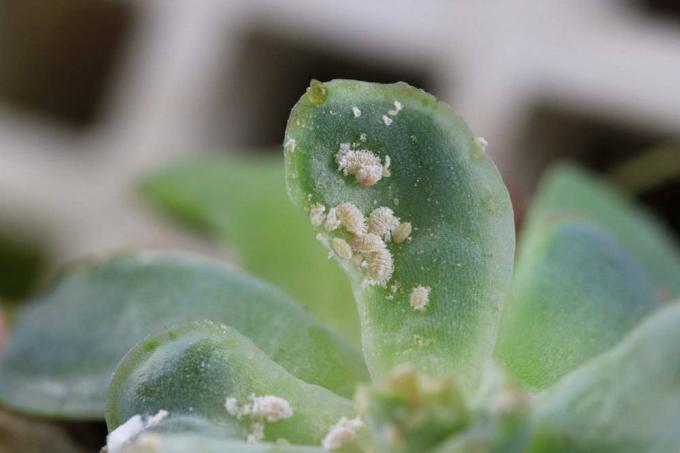
In this way you contain the infestation and, above all, the possibility of other specimens of your houseplants being infested. Then, use the following home remedies to fight the insects.
- natural predators
- Soft soap-alcohol solution
- nicotine
- Soapy water
- Bracken
- Tea tree oil
- Potassium aluminum sulfate
- Nasturtiums
- Nettles
- oregano
- Oils
- Denatured alcohol
Predators
You can remove part of the lice population via the natural predators, which is particularly gentle on the orchids or flamingo flowers. They are insects that purposefully hunt all forms of lice and are quite thorough in doing so. These include those listed below.
- Hoverflies
- Ladybug
- Predatory beetle
- Parasitic wasps
- Lacewing
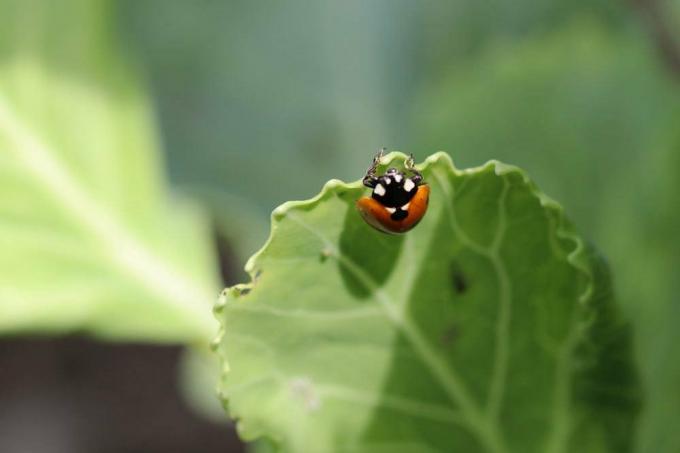
So that you don't have to catch the insects in the wild yourself, you can buy them in numerous specialist shops for animal and plant supplies. Of course, not everyone is comfortable with the idea of bringing more insects into their own four walls and those Predators do not destroy an entire colony, but above all they help to save a large part of the population decimate. This relieves you of a lot of work.
soap
Soft soap and alcohol
A solution of alcohol and soft soap is extremely effective as this home remedy is aggressive towards the animals. For this you need the following things.
- 30 g soft soap
- 30 ml ethanol (denatured alcohol)
- 2 l water (heated)
Mix all the ingredients together and let the mixture stand for about half an hour. So it can develop its effect without any problems. Now take a cotton swab, dip it in the solution and apply it directly to the scale insects. The home remedy will now eat its way through the shell into the louse and kill it. Repeat this process daily and remove any scale insects that have died so far with a knife.

Please note: Not all plants tolerate treatment with this agent. Test one of the smaller leaves or a side shoot with the solution beforehand and if it reacts negatively, use another home remedy.
nicotine
This form of treatment is more dangerous for non-smokers, new parents and pet owners, but scale insects can be combated extremely well with the pollutant. When using this remedy, it is best to use a face mask so that you do not inhale the fumes that can irritate the mucous membrane. For this you will need the following things.
- about 200 g of loose tobacco can be found in every kiosk
- 1 l water (boiled)

Let the tobacco soak in the water for an hour in a sealable container and apply the nicotine mixture with a brush as with the soft soap solution. Cotton swabs are not so good here, as the nicotine is applied over a large area of the plant and therefore no “fine work” is necessary. But only treat the shoots, leaves and lice and leave the healthy parts of the plant alone. Repeat every other day.
Soapy water
Soap suds are effective in combating scale insects and organic curd soaps without chemical substances such as perfume are particularly suitable for this. That would only damage the plant. Just make a typical lye and generously wipe the affected areas daily with a cloth.
Bracken
An extract from fern leaves can be used very well for a lemon tree or other larger indoor plants. The extract here is a brew that you then fill into a spray bottle and spread over the plant. For the extract you will need the items listed below.
- 10 g bracken (dried) or 100 g bracken (fresh)
- 1 l water (boiled)

After you have prepared the brew, it should be diluted again with about ten liters of water. You can now extensively spray the entire plant once a week. Fern has the advantage that it does not irritate the mucous membranes unpleasantly and that large quantities can be produced without any problems. This makes it easier to control the scale insects that have chosen trees or other voluminous plants as their location.
Note: If you use fresh ferns, chop them up before cooking. The brew should simmer for an hour before it can be diluted.
Tea tree oil
Simply use tea tree oil here and apply it directly to the scale insects with a cotton swab. Be careful not to treat the plant with the tea tree oil, as this would inevitably lead to severe drying out of the surface. Repeat this daily.
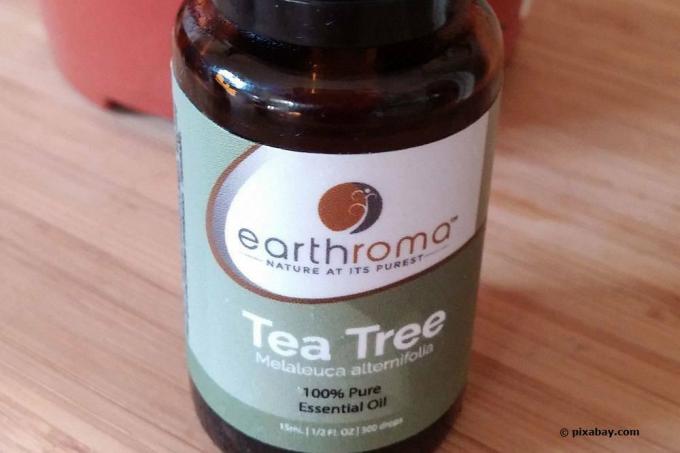
Potassium aluminum sulfate
Potassium aluminum sulfate, or alum, is sulphate of alumina that can be used efficiently for a wide variety of applications. In the field of pest control consists of a large number of metals that break the insects' shields and thereby kill them. Indoor plants should not come into contact with alum, otherwise the plant material will be damaged. Alum has an extremely intensive effect on the insects and many indoor plants are completely freed from infestation within a few applications. You will need the following materials for the solution.
- 100 g potassium aluminum sulfate (powder)
- 500 ml water (warm)
Simply dissolve the potassium aluminum sulphate in the water and then dilute it with another four liters, because this is the only way to protect the plant from the strong effects of the sulphate. You can get alum powder on the Internet or in the pharmacy, less often in the drugstore. This substance is a granulate, powder or salt that dissolves quickly in water and is therefore just as quickly absorbed by the shell of the scale insect. Again, use a cotton swab and apply the solution without wetting the parts of the plant. Repeat this daily until the infestation is gone.
Nasturtiums
Nasturtiums have been used as a medicinal plant for centuries and are also suitable as a brew. Since a brew is produced here, as with bracken, it can be used for plants such as a lemon tree without any problems, as it is simply sprayed onto the plant after preparation. To do this, you will need the following things.
- 200 g nasturtiums
- 1 l water (boiling)
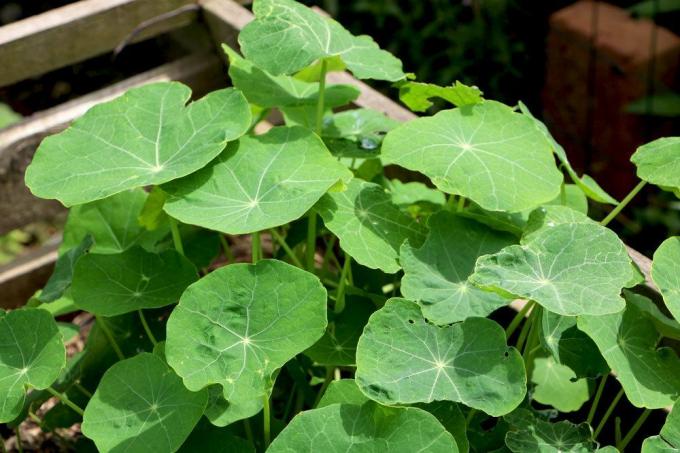
Boil the cress for a few minutes and let it steep for another 30 minutes until you dilute it with another two liters. Above all, this increases the amount of the agent and allows you to spray it on the houseplants once a week. The slightly pungent smell of the nasturtium becomes particularly noticeable through the brew and also drives away ants that are attracted by the honeydew of the lice.
Nettles
Stinging nettles can also be used to make a brew with which you can remove the pests from your indoor plants. The natural ingredients are perfectly suitable against the pests and are required for this.
- 200 g nettles (fresh) or 20 g nettles (dried)
- 1 l water (cold)
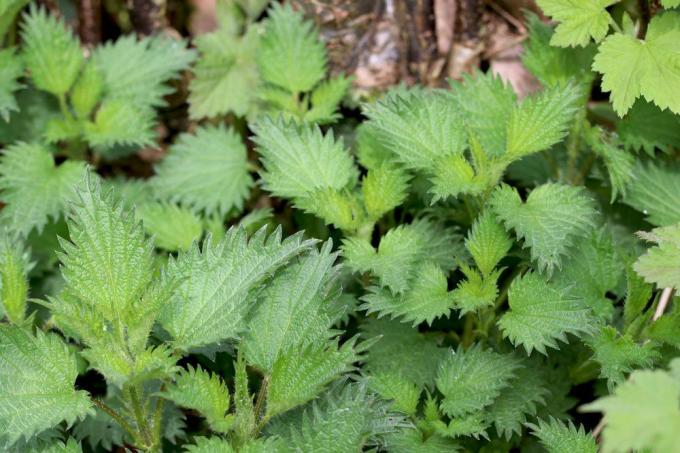
Chop up the nettles and let them steep in cold water for about eight hours. It helps to cover these with foil so they don't start fermenting, which would be unsuitable as an insect repellent. After the eight hours, sift the remedy and pour the home remedy undiluted into a spray bottle. Now generously spray the plant parts and scale insects. Don't worry, you can't apply too much here, as nettles also release nutrients to the plant and do not harm it, even orchids. Repeat this weekly until the house plants have been cleared of the scale insects.
oregano
Like the nettle, oregano has many ingredients that can be used perfectly as home remedies. You will need the following for this preparation.
- 100 g oregano (fresh) or 10 g oregano) dried
- 1 l water (boiling)
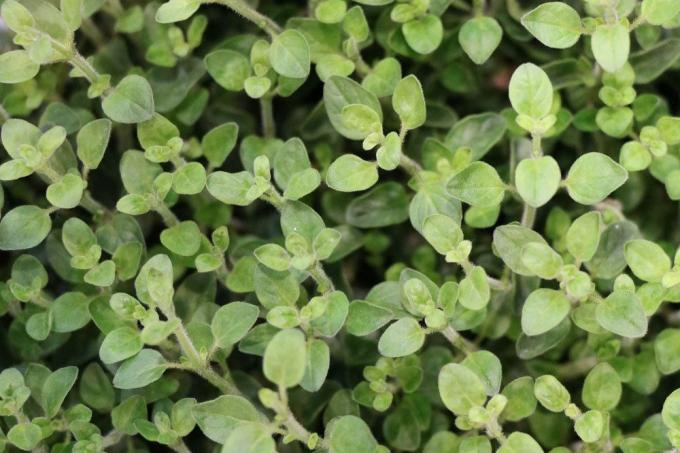
Pour the oregano on and let it steep for a quarter of an hour until you strain it and dilute it with three liters of water. Now apply the brew as a spray and repeat this weekly. A big advantage is the pleasant oregano smell that wafts through the house.
Oils
You can also apply olive oil or paraffin oil as an additional remedy. It blocks the animals' oxygen uptake and they die faster as a result. Apply one of the two oils thinly twice a day, being careful not to catch the plant parts yourself.
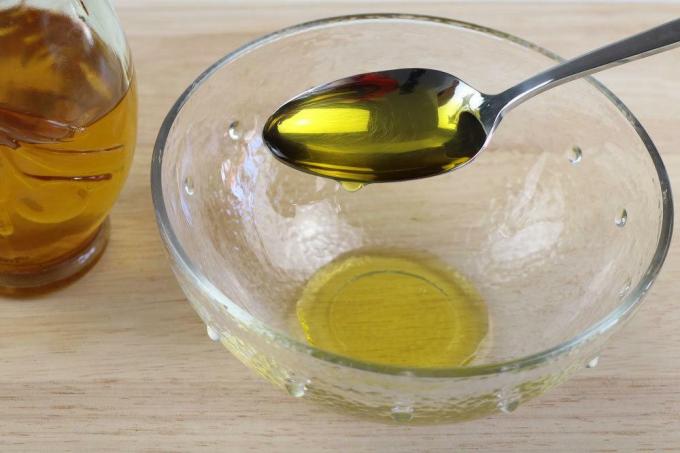
Denatured alcohol
Ethanol or denatured alcohol, like oils, is a good additional treatment. Spray the plant three to four times on the balcony or in the garden with the ethanol. This acts like a booster for other treatment methods.
After treatment
As soon as your house plants have been freed from the lice, you should cut off infected and weakened parts of the plant and dispose of them in the household waste, not the compost. You should also repot the houseplants and wash out the roots beforehand, as some types of lice lay their eggs there.
